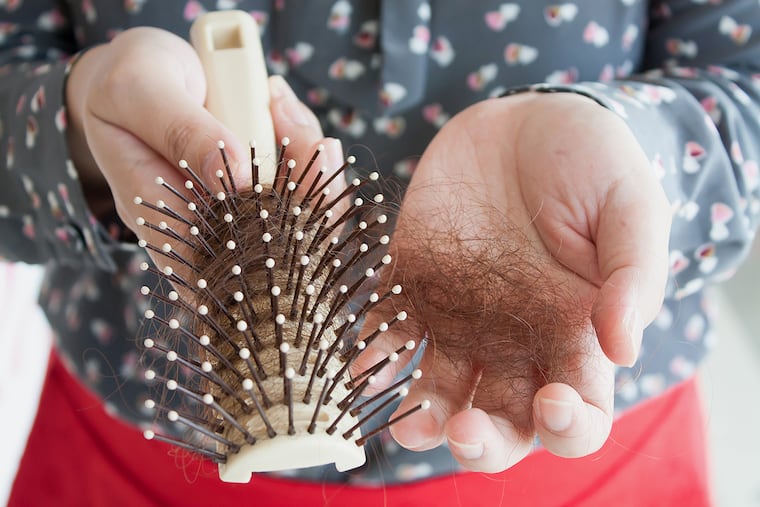Penn study says retailers charge women more than men for common hair loss medications
A new study in a leading dermatology journal says the "pink tax" appears to being levied on women's hair loss products.

Ladies, ever feel like pulling your hair out over making only 83 cents for every dollar men earn?
Don't do it. A new study says women are also charged a lot more than men for anti-baldness remedies.
According to findings published online Wednesday in JAMA Dermatology, women on average pay 40 percent more than men for minoxidil foams – a hair-loss fighting product most commonly sold as Rogaine.
The analysis was performed by researchers at the Perelman School of Medicine at the University of Pennsylvania.
The price differences were found even though the men's and women's versions of the foam formulas contain the same drug strength and inactive ingredients, the report found.
"This may reflect the larger issue of gender-based pricing, which, to our knowledge, has not been previously shown for medications," the study states.
Jules Lipoff, lead study author, said the pricing seems to be an example of "the pink tax" – charging more for products that are made for and marketed to women than for similar goods aimed at men.
The study looked at 41 minoxidil products from 24 pharmacies in four states – Pennsylvania, New York, Ohio, and Indiana. In the case of the solution products, the men's formula contained 5 percent minoxidil while the women's had 2 percent. However, the researchers found the price per 30 milliliters to be about the same.
Women tended to be charged the same amount of money per unit although their products contained less medicine, said Lipoff, a Penn assistant professor of dermatology.
Still, Lipoff said there might be other reasons for the price difference.
In the foam products, both men's and women's versions contained 5 percent minoxidil, as well as identical inactive ingredients. However, the ones sold as women's products cost on average about 40 percent more per ounce than the men's, the study states.
Marc Boston, a spokesman for Johnson & Johnson, said the company's Rogaine foam with 5 percent minoxidil is priced the same for both genders' formula on the product's website.
"I can't speak for pricing by individual retailers," Boston said.
According to the Penn article, about 50 million men and 30 million women in the United States have androgenetic alopecia, or male-pattern and female-pattern baldness. With men, it usually presents as a receding hairline, while women tend to experience thinning hair. Hair-loss treatments represented a global market valued at $7.2 billion in 2015, the study said. That market is projected to increase in the coming years.
Lipoff said he first noticed the pricing discrepancies when shopping in a Target store that listed price per ounce of products, as well as the selling price of the items.
The study is not an indictment of the product itself, Lipoff added. He said he has recommended it to patients. However, he tells his female patients who would buy minoxidil foam to buy the men's formula, rather than the one marketed to women.
"Why pay more?" he said.
Studies and consumer journalism have long pointed out that women are often charged more for products and commercial services than those aimed at male consumers.
A 2015 study by the New York City Department of Consumer Affairs found that products aimed at female consumers were likely to cost more than those marketed to men. That included girls' and women's clothing, toys, personal care products, and senior home health care products.